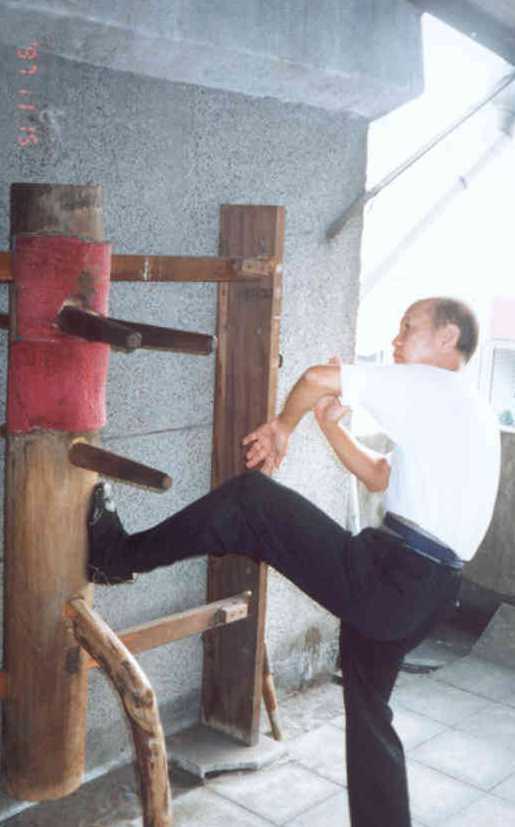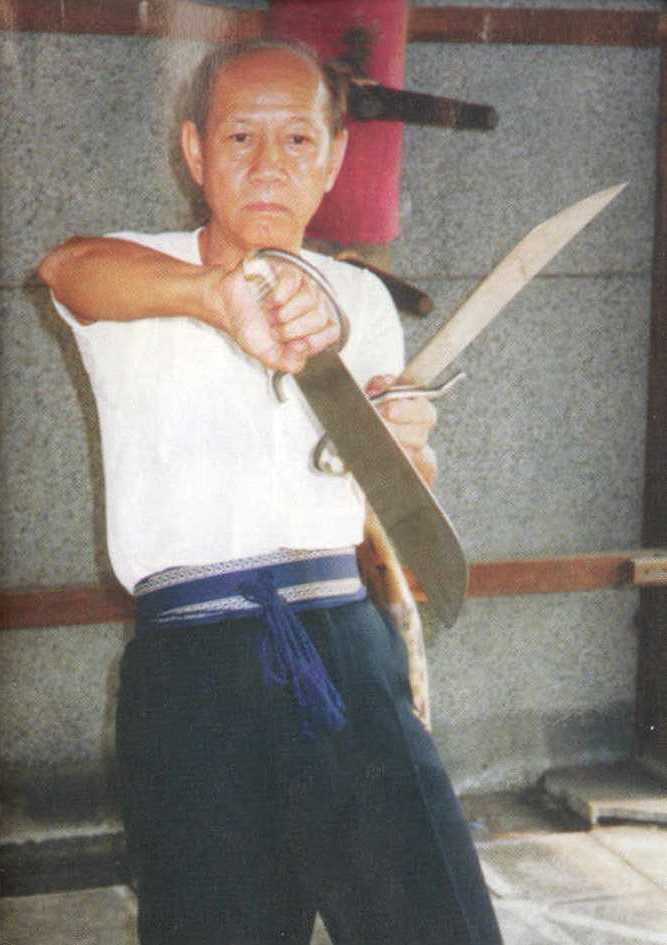Wing Chun Forms
Wing Chun as taught by Grandmaster Yip Man has three empty-hand forms, a wooden dummy form, and two weapons form. Integrated into drills and sticky hands practice, the motions of the forms form to basis of an effective repertoire of self-defense skills.

The foundation upon which an individual's Wing Chun skills are built upon, the first form contains many of the hand motions found in the Wing Chun system. 108 movements are executed from the training stance (or "horse", with no turning of the waist or horse. In this way, the student learns to maintain relaxation, and execute quick, springy punches.
Chum Kiu, "Searching for the Bridge"
The second form teaches the turning of the horse to change angles,
adjust facing, and increase punching power. Its name refers to the
fact that it contains techniques to create a "bridge," or arm contact with
an opponent from which one can apply sticky hands skills. It further
introduces two kicks and side-horse stepping.
Biu Jee, "Flying Fingers"
The final empty-hand form, Biu Jee, was once passed on to only the
closest of students. It appears to be a straight forward, energetic
form; yet, beneath the surface, one learns subtle skills such as releasing
potential energy in the joints ("short power"), opposing pulling-pushing
forces, and "bridge borrowing."
Wooden Dummy Form
Although a student will start using the dummy early in training to
toughen forearms and practice hand positions, there is also a set routine
of 108 movements. The form includes many side-stepping techniques
and low kicks, as well as several other subtleties of the style.

Two weapons sets, the "Six and a Half Pole" form, and the "Eight Cutting Knives" form, complement the unarmed skills of Wing Chun. Embodying the same principles and basic techniques, the weapons become an extension of the hands. While weapons skills were a quite important aspect of self-defense in the past, in modern times, the training of these two weapons sets can help the Wing Chun practitioner improve his empty-hand skills.
